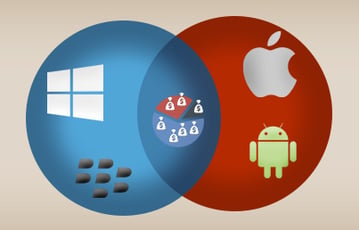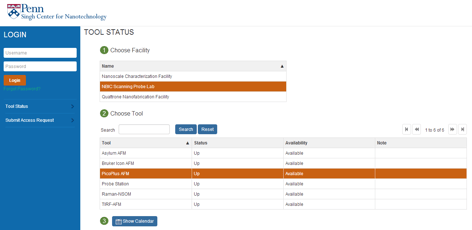Is there really an app for everything? These days, it seems like an off-the-shelf solution exists for any challenge your business has. A quick Google search may even seem to confirm this. But, does that mean you should buy pre-packaged software solutions just because they exist or should you instead create one to fit your needs?
If you build your own custom solution, then how do you mitigate project delivery risk and keep costs low while also aligning the business’ objectives with the project’s? On top of managing those challenges, how do you also build your solution in a timely manner?
At some point, we all have had to weigh the pros and cons of buying vs. building software solutions. A custom solution is not the right choice for all use cases, but there are many instances where the benefits of building vs. buying an off-the-shelf solution far outweigh the costs. Rather than diving into the pros and cons, I want to share the concrete steps Kinetech took to mitigate the risks to our manufacturing client’s budget, timeline, and operations to deliver an ecosystem of custom applications within 18 months. We were able to start with a simple prototype and scale into a total of 6 applications within this timeframe. If you have ever wondered about creating a custom application but are worried about project success and timeliness, then perhaps the experience I am about to share will give insight into a possible approach.
-1.jpg?width=812&height=542&name=thisisengineering-raeng-ZPeXrWxOjRQ-unsplash%20(2)-1.jpg)
Kinetech and our manufacturer chose to build a proof of concept (POC) to prove whether or not Mendix (and its associated infrastructure) could support near real-time data processing and reporting from the machines on the shop floor to our Mendix applications. At the same time, end users would need to access the application from the shop floor, where the time spent completing their activities would be tracked based on the near real-time inbound data feed from the machines. In doing so, it would prove that an application built in Mendix could support their existing technical landscape, meets their objectives, and lays the framework for subsequent applications to come.
The top objectives the manufacturer wanted to achieve were the following:
- Connecting data silos
- Automation of error-prone paper processes
- Tracking shop floor data
- Analytical capabilities of overall equipment effectiveness
Understanding your key objectives before any development and sticking to them means less risk of failure. The plan will certainly adapt and change but knowing what you are trying to achieve will help create your roadmap, define functional requirements, and execute accordingly. Using this approach, we addressed the most important pieces of the POC first and proved that there were no technical limitations. Our collaboration and adaptability reduced project risk, leading to a successful POC.
Where do you go from here? It depends…! In our case, we had a sense of what it took to create this POC, yet, it still wasn’t a finished product. For our client, their ultimate goal was to create an ecosystem of applications designed to process and track shop floor operations data to answer the question: “What happened today and how can we improve tomorrow?”. To get them one step closer to this, we needed to scale the POC to a full solution. More importantly, because we knew that other use cases in this application suite would be similar in nature, we needed to design with reusability in mind. This meant more iterative development with the manufacturer. Why? This ensures less wasted time and budget while keeping business objectives aligned.
Reusability of your code base is a topic on its own. Picture you are building a very simple LEGO house. I know, they are never simple. However, imagine cloning the first wall you built to fast-track the second wall? You may get done faster this way. Designing reusable components accelerated our development, lessened delivery risk, helped keep costs low, and ultimately reduced the time it took to launch our client’s product.
A few of the major reusable components built for this application suite were:
- Mobile app for human input
- Microservice architecture connecting existing systems to apps in the suite and apps to each other
- Data tracking, processing, and notifications in real-time
- Dashboards with meaningful metrics and charts for management
- Load and functional testing for scalability
If you’ve been wondering how costs are kept low in a project like this, consider that once a component is built in a reusable manner, it’s simply a matter of “plugging in” that component to a new use case and modifying very little of it. Along with keeping costs low, delivery time decreases since we spend time building new capabilities versus rebuilding capabilities we already built.. Each subsequent application built after the first required less time and effort. We focused mainly on that application’s uniqueness and took advantage of reusability.
Beginning with the POC to transitioning to a fully production-ready solution, we mitigated technical risks to ensure the project’s success and achievement of our client’s key business objectives. Amazingly, we built this 6-app application suite in an 18-month window. Reusability, helped keep costs low and fast-tracked project delivery while mitigating timeline risk every step of the way. Each of these applications helps our client understand what happened today and what decisions can be made for a better tomorrow.
Some additional benefits our client gained are the following:
- Mobilizing the workforce with a mobile-friendly web app eliminates downtime walking the shop floor to stationary devices
- Reduced operational costs by eliminating installation and maintenance costs of clunky manufacturing hardware, not to mention downtime in updating and maintaining equipment.
- Tracking data in a consistent meaningful way
- Real-time and historical analysis for managerial decisions
- Extending ERP systems by incorporating them into the custom apps
- Reusable components provide the ability to scale their application suite further quicker
If you are thinking about building a custom application versus buying something off the shelf and have concerns with how to do this successfully, I hope our experience provided you with some insight into how to potentially approach this. Not every custom application turns into an application suite and not every challenge needs a custom application. However, I believe whether you’re dealing with one or multiple projects, you can approach them in a similar fashion. Kinetech can help you align your project’s goals with your business objectives. We specialize in custom applications and can help you make an app for that!
Enhance Your Shop Floor with Automation
Discover how our Shop Floor Automation solutions can streamline your manufacturing processes, increase efficiency, and reduce downtime.
.png?width=246&height=70&name=Kinetech%20PM%20246%20x%2070%20(1).png)


